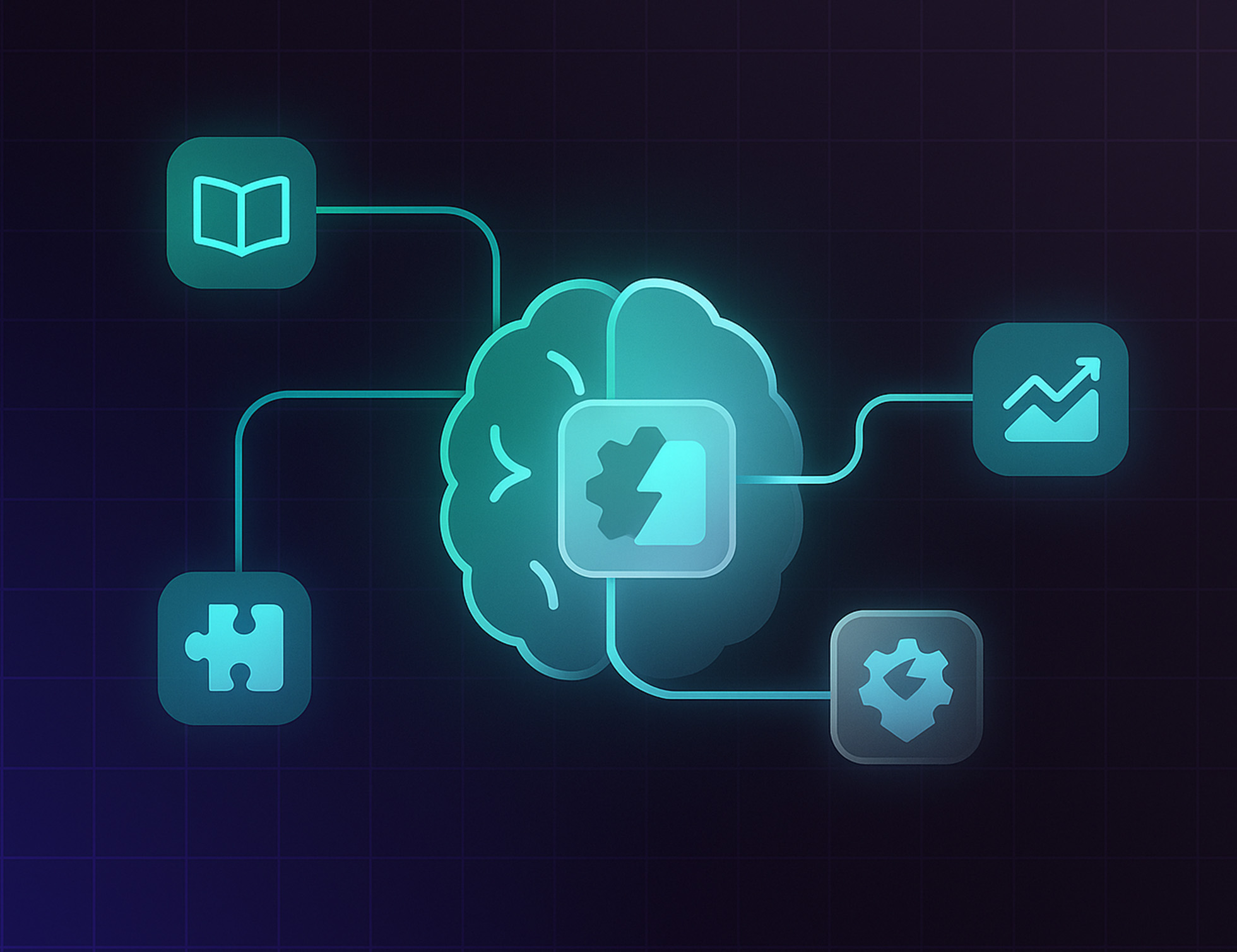Join our newsletter



Imagine a child encountering a bicycle for the first time. Within minutes of seeing someone ride, they understand the basic concept: balance, pedaling, and steering. This remarkable ability to rapidly acquire new skills by leveraging previous learning experiences represents one of the most fascinating aspects of human intelligence. Today's AI systems are beginning to replicate this capability through meta-learning, fundamentally transforming how we approach machine learning deployment and adaptation.
Meta-learning emerged from a simple observation: traditional machine learning models require extensive training data and computational resources for each new task. A computer vision model trained to recognize cats cannot easily adapt to identify dogs without substantial retraining. This limitation becomes particularly problematic in enterprise environments, where businesses require AI systems that can quickly adapt to new domains, products, or customer segments.
The breakthrough came when researchers realized they could train models to become efficient learners themselves. Instead of learning specific tasks, these systems learn learning strategies that generalize across multiple problems. This paradigm shift has profound implications for rapid model deployment and customization.
Modern meta-learning approaches organize around three fundamental methodologies, each addressing different aspects of the learning-to-learn problem.
Model-Agnostic Meta-Learning (MAML) represents perhaps the most intuitive approach. MAML trains a model's initial parameters such that a few gradient steps on new tasks yield optimal performance. Think of it as teaching a neural network the perfect starting position for any learning challenge. The elegance lies in its simplicity: the same algorithm works across different architectures and domains.
Metric-based methods take a different angle by learning similarity functions between examples. These systems create embedding spaces where similar instances cluster together, enabling rapid classification of new examples through nearest-neighbor approaches. Siamese networks and prototypical networks exemplify this methodology, excelling particularly in few-shot classification scenarios.
Optimization-based approaches focus on learning efficient optimization procedures themselves. Rather than relying on standard gradient descent, these methods discover task-specific optimization strategies that converge faster and generalize better to new problems.
Here's how MAML works in practice using PyTorch for a few-shot learning scenario:
import torch
import torch.nn as nn
import torch.optim as optim
from torch.utils.data import DataLoader
class MAMLModel(nn.Module):
def __init__(self, input_size, hidden_size, output_size):
super(MAMLModel, self).__init__()
self.net = nn.Sequential(
nn.Linear(input_size, hidden_size),
nn.ReLU(),
nn.Linear(hidden_size, hidden_size),
nn.ReLU(),
nn.Linear(hidden_size, output_size)
)
def forward(self, x):
return self.net(x)
def clone_parameters(self):
return [p.clone() for p in self.parameters()]
def maml_training_step(model, support_set, query_set, inner_lr=0.01, meta_lr=0.001):
original_params = model.clone_parameters()
support_loss = nn.functional.mse_loss(
model(support_set['x']),
support_set['y']
)
gradients = torch.autograd.grad(
support_loss,
model.parameters(),
create_graph=True
)
for param, grad in zip(model.parameters(), gradients):
param.data = param.data - inner_lr * grad
query_loss = nn.functional.mse_loss(
model(query_set['x']),
query_set['y']
)
return query_loss
model = MAMLModel(input_size=10, hidden_size=64, output_size=1)
meta_optimizer = optim.Adam(model.parameters(), lr=0.001)
for episode in range(1000):
tasks = sample_tasks(batch_size=16)
meta_loss = 0
for task in tasks:
support_set, query_set = task.split()
task_loss = maml_training_step(model, support_set, query_set)
meta_loss += task_loss
meta_optimizer.zero_grad()
meta_loss.backward()
meta_optimizer.step()
This implementation demonstrates MAML's core principle: the model learns initialization parameters that enable rapid adaptation to new tasks through minimal gradient updates.
Meta-learning's impact extends far beyond academic research, creating tangible business value across multiple sectors.
Personalized NLP systems represent one of the most immediate applications. Traditional language models require extensive fine-tuning for domain-specific applications. Meta-learning enables rapid adaptation to specialized vocabularies, writing styles, or industry jargon with minimal training examples. A legal document processing system can quickly adapt to medical terminology, or a customer service chatbot can learn new product categories overnight.
Robotics and automation benefit tremendously from few-shot adaptation capabilities. Manufacturing robots equipped with meta-learning can rapidly adjust to new parts, assembly processes, or quality control requirements without extensive reprogramming. This flexibility dramatically reduces deployment time and maintenance costs.
Recommender systems leverage meta-learning to address cold-start problems. When new users join a platform or new products launch, meta-learned models can generate relevant recommendations based on minimal interaction data, improving user experience and business metrics from day one.
Despite its promise, meta-learning presents several technical challenges that teams must address carefully.
Overfitting to task distributions represents the most significant risk. Meta-learning models excel at tasks similar to their training distribution but may struggle with truly novel problems. This limitation requires careful task sampling strategies and robust evaluation protocols.
Computational overhead can be substantial, particularly for gradient-based methods like MAML. The nested optimization loops and gradient computations through gradients increase training time and memory requirements significantly. Production deployments must balance meta-learning benefits against computational costs.
Task definition and sampling require domain expertise and careful consideration. The quality of meta-learning depends heavily on how well the training task distribution represents real-world deployment scenarios.
At Kenility, we've integrated meta-learning principles into our AI development pipeline, enabling unprecedented speed in model customization and deployment. Our approach combines automated meta-learning frameworks with domain-specific task sampling strategies, allowing us to deliver production-ready AI solutions in weeks rather than months.
Our meta-learning toolkit addresses real enterprise challenges: rapid prototyping for new market segments, quick adaptation to changing business requirements, and efficient resource utilization across multiple client deployments. This capability positions our clients ahead of competitors who still rely on traditional, time-intensive model development approaches.
The future of AI lies in systems that adapt as quickly as business needs evolve. Meta-learning provides the foundation for this adaptability, transforming AI from a static tool into a dynamic partner in business growth.
GitHub Repository: Complete MAML implementation and examples